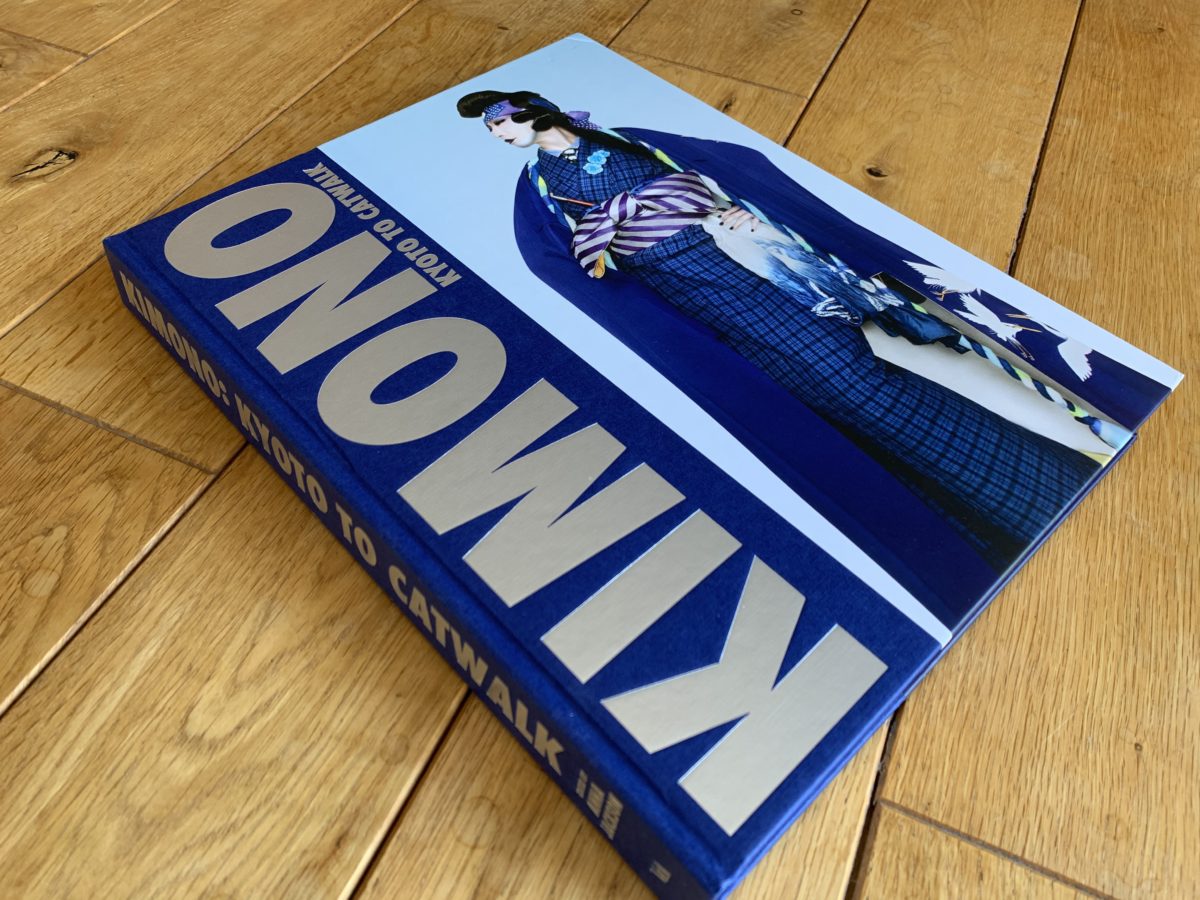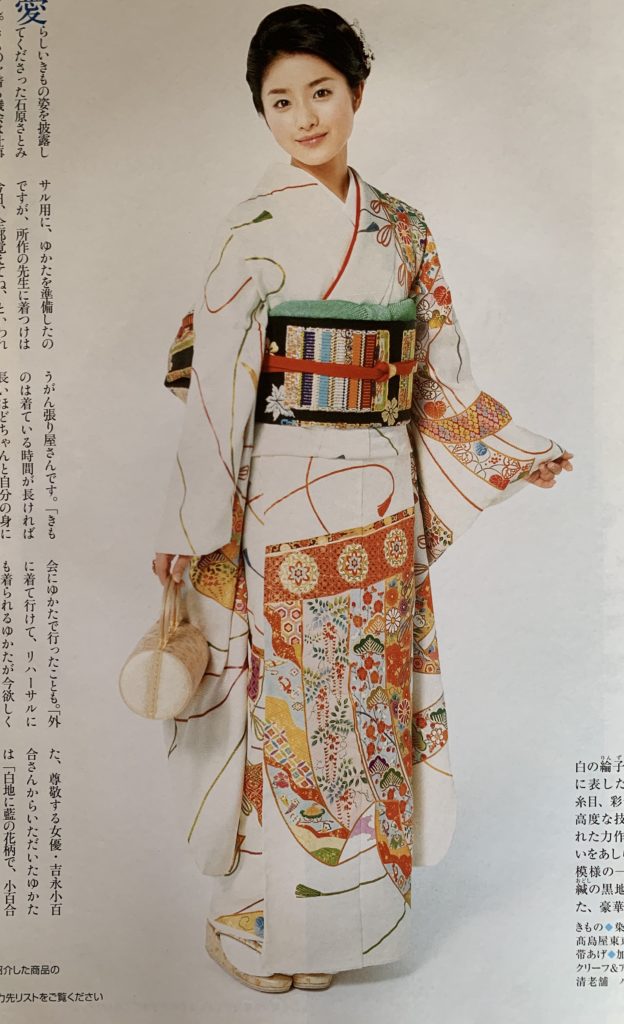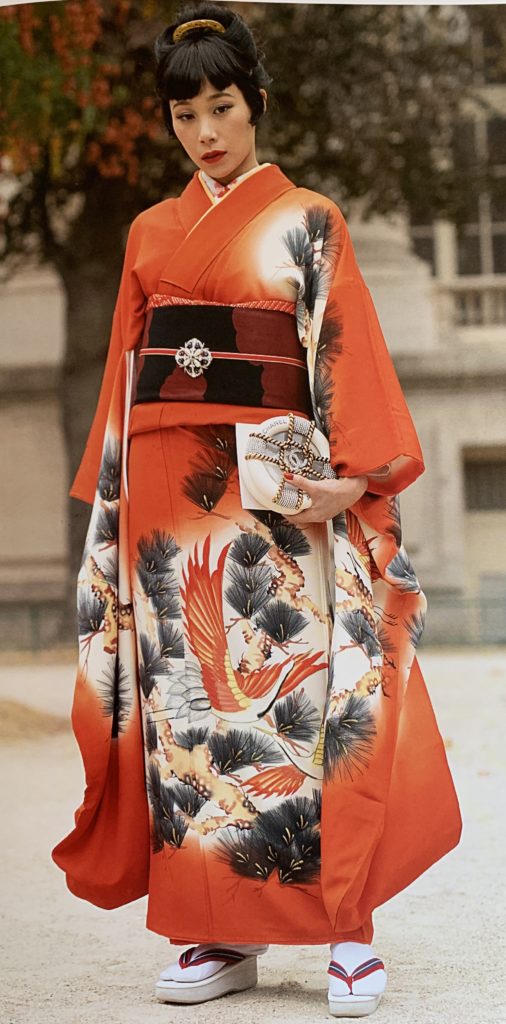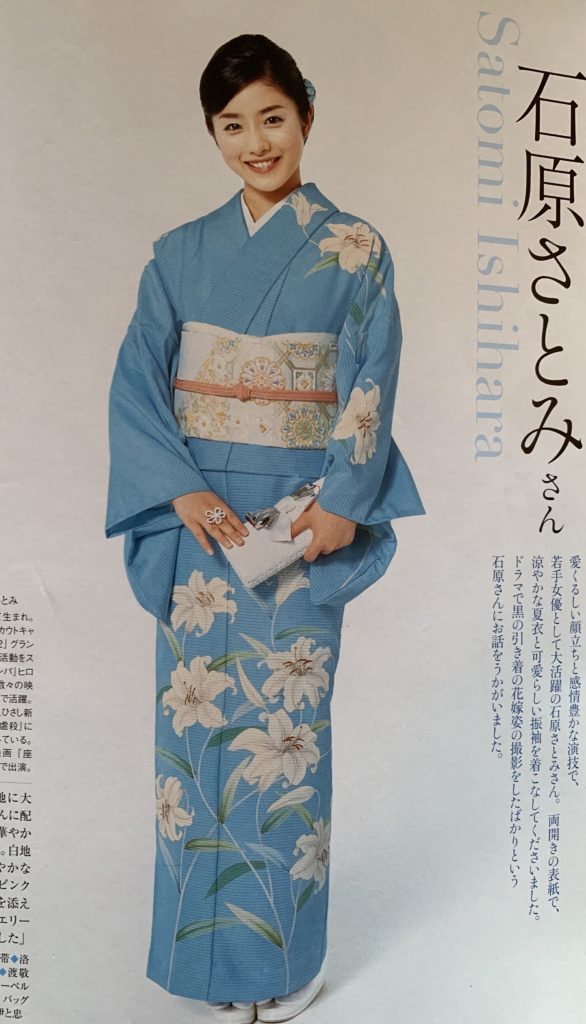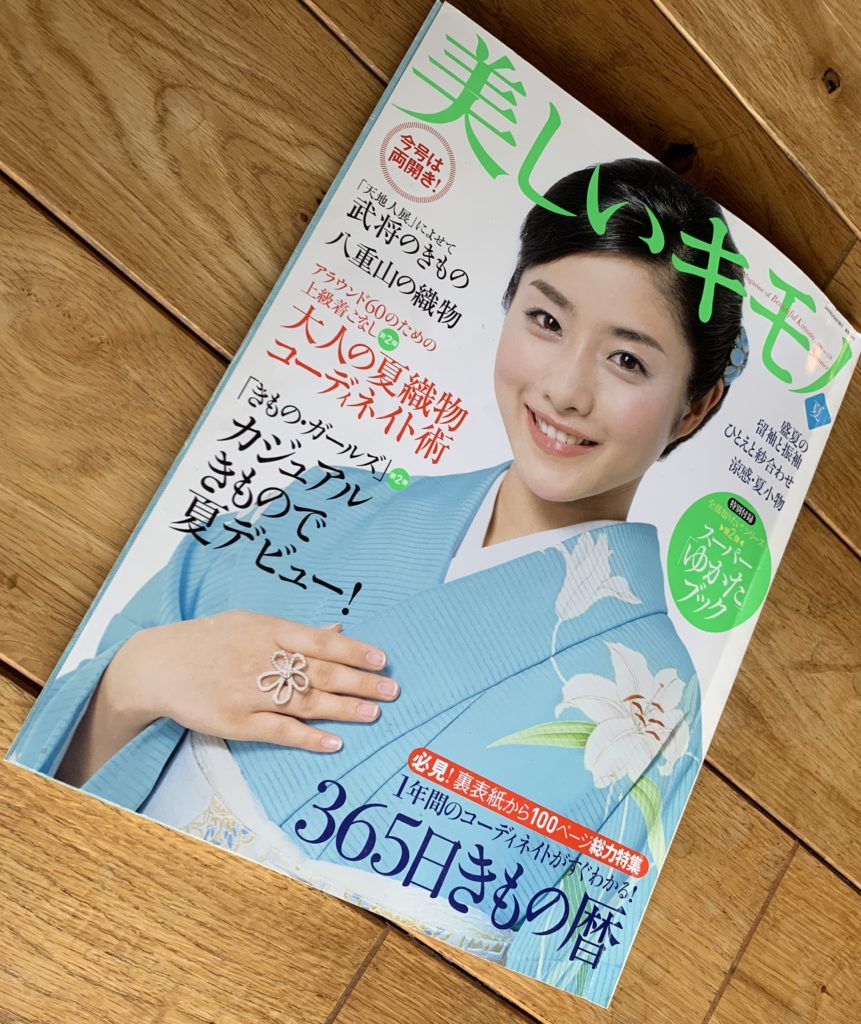From spring to summer this year, large-scale kimono-themed exhibitions should have been hot topics in London and Tokyo. However, due to the outbreak of COVID-19, the exhibition museum in London has been closed, and the exhibition in Tokyo, which is scheduled to start in mid-April, is in flux.
The London exhibition is hosted by the Victoria and Albert Museum I love.the exhibition “Kimono:Kyoto to Catwalk” at the museum started on 29th Feb. But,just after the opening, the museum was closed.
The other is the “KIMONO: Fashioning Identities” which will be held at the Tokyo National Museum on April 14. The museum is currently closed and there is no prospect of reopening. The two exhibitions are scheduled until June, so we can only hope that they can be held.
On the day when the temporary closing of V&A was announced, coincidentally, from the United Kingdom, the catalog of “Kimono: Kyoto to Catwalk” has arrived.
First of all, I am overwhelmed by the volume of the catalog. 25.4 x 3.6 x 32.1 cm. 330 pages.
First, let’s cite the book introduction on Amazon.
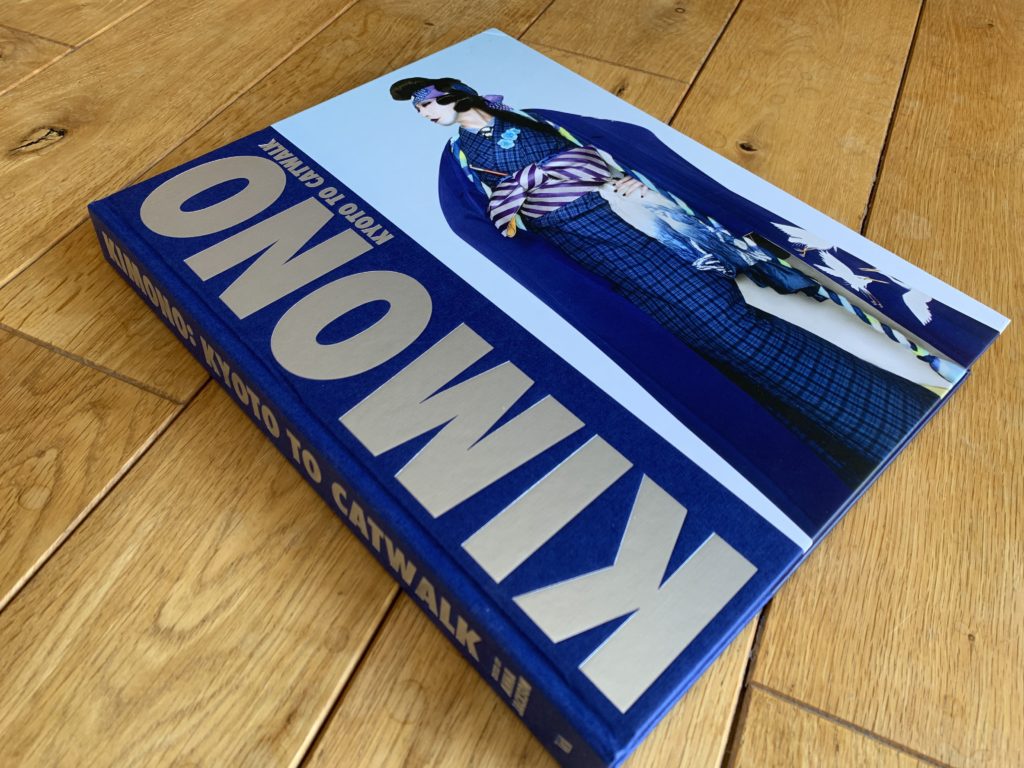
”The kimono worn by women, men, and children is the ultimate signifier of Japan revered within the country as the embodiment of national culture and regarded internationally as an exotic fascination. Often viewed as a simple, unchanging garment, the kimono has been equated with tradition and seen as something static and timeless. This book, published to accompany a major exhibition at the V&A, London, presents the kimono as dynamic and fashionable, and explores its significance in historical and contemporary contexts, both in Japan and in the West. Beautifully illustrated,it includes more than 200 kimono from collections at the V&A and around the world, as well as examples of the ways in which they have been represented in paintings, prints, and photographs, and interpreted more recently in popular culture and fashion, from Björk to David Bowie, John Galliano to Issey Miyake.”
Well, this is right.It’s very interesting. From the Edo period to the present day, from Japan to the world, The exhibition shows a variety of kimono fashions and possibilities.So, I’d like to introduce it to you as I read.
Very interesting is that the book presents the kimono as dynamic and fashionable, and explores its significance in contemporary contexts, both in Japan and in the West. Look at the 2 pictures.
On the left is a quotation from the spring 2009 issue of Japan’s leading luxury kimono magazine “Utsukushii Kimono(Beautiful Kimono)”. Japanese actress, Satomi Ishihara is wearing a Yuzen furisode kimono in Kyoto. This is 100% conventinal. On the right is a quote from the V&A catalog.Japanese model, Mademoiselle Yulia is wearing a vintage furisode kimono. It is from Chanel’s Spring / Summer 2019 show in Paris . Yulia’s kimono fashion is also almost conventional. But,a little bit “the conventinal has been rubbed away”
Josephine Rout, a V&A curator who quoted Yulia at the Chanel show in a catalog, explains her fashion strategy.”She styled her ensemble with Chanel accessories, including a clutch and a brooch worn as a obi-dome”.”Such sartorinal ‘bricolage’ enables the wearer to imbuke kimono with their own personality,thereby ensuring that the garment remains mutuble and dynamic,rather than simply a static tradition of the past”.
On the other hand, Ishihara’s kimono fashion is textbook-like and has no personality. Ishihara is a beautiful young actress who ranks among the “100 beautiful women in the world”, so it is beautiful. But somewhere, like a doll.
By the way,the magazine “Utsukushii Kimono” is a high-quality kimono magazine launched in 1953. You can enjoy very expensive and authentic kimono and beautiful model kimono fashion. However, it will be of no use except for those who want to learn very authetic text-like kimono dressing.
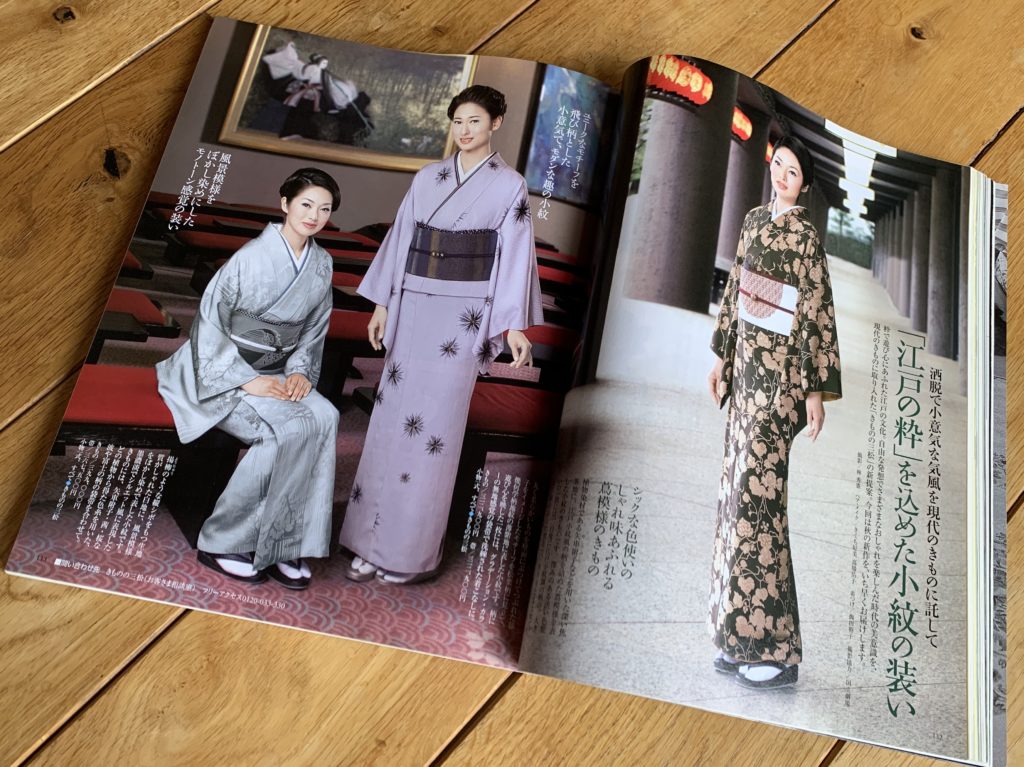
In the following video, Yulia introduces her kimono and says, “If you follow the minimum rules, you can wear whatever you like.” I agree. While reading the catalog of V&A, I will continue my journey of thinking about the potential of kimono fashion.
